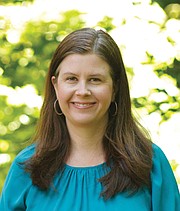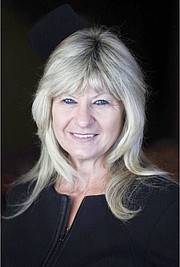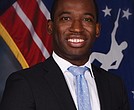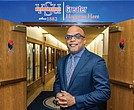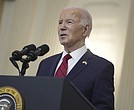City Council acts to reduce ‘drama’ during annual school funding debates
Jeremy M. Lazarus | 3/29/2019, 6 a.m.
Richmond Public Schools each year would receive at least 55.4 percent of all real estate tax revenue City Hall collects under a policy unanimously approved Monday night by Richmond City Council.
Fourth District Councilwoman Kristen Larson, who spearheaded the effort, called it a way to provide the Richmond School Board with more certainty about the city’s minimum contribution to public education.
The 9-0 vote represented a big win for Ms. Larson considering that the council had rejected a similar formula-based approach just two years ago.
Setting a floor will “take some of the drama” out of the annual debate over school funding, Ms. Larson said, noting that as the tax base grows, so would the city’s support for public education.
Last year, when City Council approved a two-year budget, RPS was designated to receive $156.67 million in city funds in the 2019-20 fiscal year that begins July 1. That amount represented a $2.2 million reduction from $158.9 million allocated in the current 2018-19 fiscal year.
Under the new formula and based on projections of expected real estate tax growth, the school system is on track to receive $163.9 million in the upcoming fiscal year even if the council rejects Mayor Levar M. Stoney’s proposed 9 cent increase in the property tax. That would represent a $4 million increase over the current city contribution.
If City Council approves the tax increase, the school system would receive $175.6 million, based on the projected $21 million the tax increase would generate.
Schools Superintendent Jason Kamras expressed disappointment at the development of the formula, which would provide a smaller percentage of real estate tax dollars to schools than the city has provided each year since at least 2009.
On average, the council has delivered 59 percent of all real estate tax dollars to schools.
Ms. Larson said the council could always increase the support it provides to public schools. “The 55.4 percent is just the minimum,” she said.
The formula approach also drew fire from Paul Goldman, leader of the Put Schools First campaign that has pushed for the city to modernize all of its public school buildings.
“This is another ‘feel good solution’ that ultimately will not solve the key legal, educational fiscal issues denying RPS kids their right to equal educational opportunities,” Mr. Goldman stated. “This is student government. We need serious leadership.”
While approving the approach, two members of City Council issued scathing criticism of the way the School Board and the schools administration are planning to spend tax dollars in the upcoming year.
Eighth District Councilwoman Reva M. Trammell decried Mr. Kamras’ plan to lay off 17 attendance officers that operate across the school district in trying to reduce truancy and, instead, have seven attendance liaisons work at specific schools on truancy reduction.
Ms. Trammell said the attendance officers already know the families and children and have a rapport with them. She said the new approach is likely to be a failure, and she urged the School Board to reconsider.
Separately, 2nd District Councilwoman Kim B. Gray criticized Mr. Kamras’ assertion that his proposed budget would reduce spending at the central office.
She noted that the budget Mr. Kamras presented includes a $1 million increase in salaries for top school administrators compared with the amount spent on administrative salaries two years ago.
Ms. Gray said that the growth indicates that Mr. Kamras, instead of reducing the administrative cost of public schools as he promised, has in fact swelled it, undermining his argument about the need for more funding.


